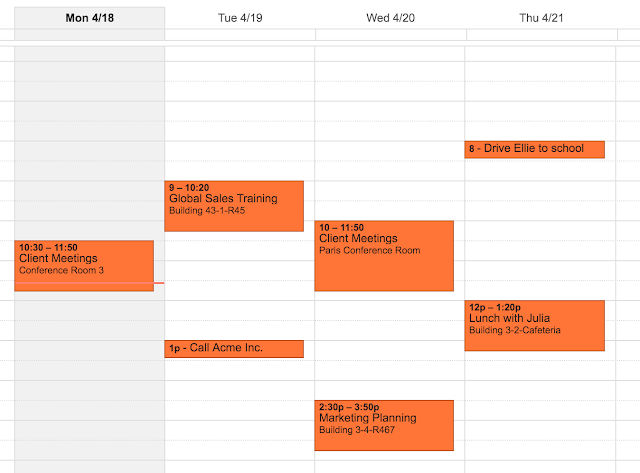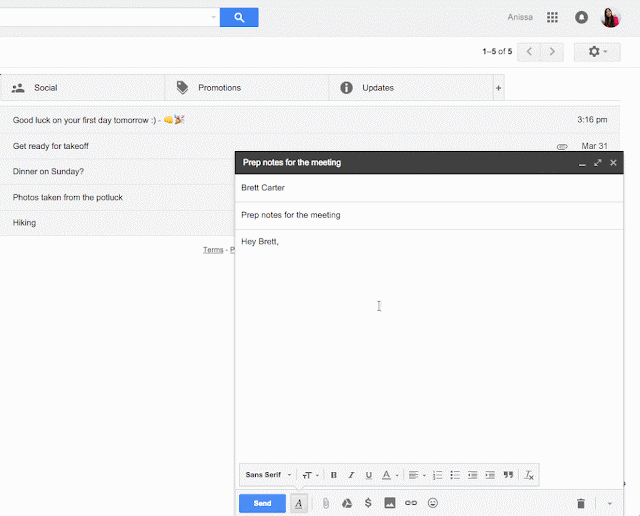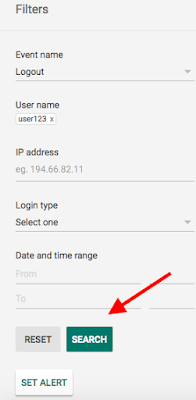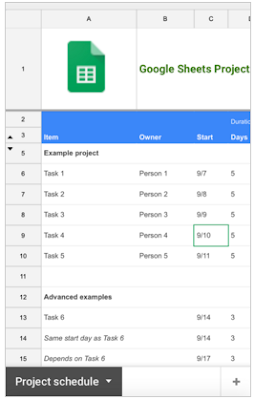Opening Google Docs, Sheets, and Slides files on mobile now easier when you’re offline
May 18th, 2016 | by Jane Smith | published in Google Apps, Google Docs
We know that internet connections can be spotty when you’re working on your phone on the go. And we recognize that sometimes you need access to a file you didn’t remember to make available offline. With this launch, we’ll make it easier to open Google Docs, Sheets, and Slides files on your Android and iOS devices when you’re not online.
Starting today, any Docs, Sheets, or Slides files you’ve recently worked on will be automatically synced to your mobile device, so you can open them even if you don’t have an internet connection. As your documents, spreadsheets, and presentations go stale—or if your phone or tablet maxes out on storage space—we’ll remove those older files from your device. To see what documents are saved to your device and to access them later, simply select Offline from the overflow menu in your Docs, Sheets, or Slides app. This will show files synced both automatically and manually (note that manually synced files will now be labeled with a checkmark, instead of a pin icon).
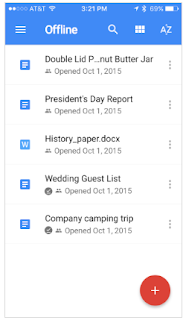
Launch Details
Release track:
Launching to both Rapid release and Scheduled release
Rollout pace:
Gradual rollout (potentially longer than 3 days for feature visibility)
Impact:
All end users
Action:
Change management suggested/FYI
More Information
Help Center: Work on Google files offline
Note: all launches are applicable to all Google Apps editions unless otherwise noted
Launch release calendar
Launch detail categories
Get these product update alerts by email
Subscribe to the RSS feed of these updates
Disabling support for SSLv3 and RC4 for Gmail SMTP in 30 days
May 16th, 2016 | by Jane Smith | published in Google Apps
Last September, we announced plans to no longer support two very old security systems called SSLv3 and RC4. As mentioned in Adam Langley’s announcement, these systems are no longer secure and pose a risk to those still using them:
SSLv3 has been obsolete for over 16 years and is so full of known problems that the Internet Engineering Task Force (IETF) has decided that it must no longer be used. RC4 is a 28-year-old cipher that has done remarkably well, but is now the subject of multiple attacks at security conferences. The IETF has decided that RC4 also warrants a statement that it too must no longer be used.
Because of these issues, after June 16, 2016, we will disable both SSLv3 and RC4 support at Google’s SMTP servers and on Gmail’s web servers.
If you are still using SSLv3 or RC4:
- Most organizations on Google Apps have already stopped using SSLv3 and RC4; however, if you are still on these older systems, we recommend reviewing the suggested actions in the Security Blog announcement and updating to modern TLS configurations.
- Some common systems that may still be using SSLv3: inbound/outbound gateways, third-party emailers, and systems using SMTP relay.
After this change, servers sending messages via SSLv3 and RC4 will no longer be able to exchange mail with Google’s SMTP servers, and some users using older and insecure mail clients won’t be able to send mail.
Launch Details
Release track:
Launching to both Rapid release and Scheduled release
Rollout pace:
Gradual rollout (potentially longer than 3 days for feature visibility)
Impact:
Admins only
Action:
Admin action required for domains using SSLv3 and RC4 for Gmail SMTP
More Information
Disabling SSLv3 and RC4
Note: all launches are applicable to all Google Apps editions unless otherwise noted
Launch release calendar
Launch detail categories
Get these product update alerts by email
Subscribe to the RSS feed of these updates
See event locations at a glance with Google Calendar on the web
May 12th, 2016 | by Jane Smith | published in Google Apps
Google Calendar on the web is getting an update today: event locations will now appear in the day and week views.
Instead of needing to navigate to an event’s details in order see the event location, the event location will now appear on your calendar, when there is enough space available. For example, the Global Sales Training is located at Building 43-1-R45 in the image below:
Launch Details
Release track:
Launching to Rapid release, with Scheduled release coming in 2 weeks
Rollout pace:
Full rollout (1-3 days for feature visibility)
Impact:
All end users
Action:
Change management suggested/FYI
Note: all launches are applicable to all Google Apps editions unless otherwise noted
Launch release calendar
Launch detail categories
Get these product update alerts by email
Subscribe to the RSS feed of these updates
Dial in with ease using the latest Google Calendar app for Android
May 11th, 2016 | by Jane Smith | published in Google Apps
An update to the Google Calendar app for Android is coming to Google Play. When you dial in to your conference call, Google Calendar can now automatically add the passcode. Simply tap the call-in number from the calendar event and you’ll be prompted to select the relevant passcode for you ─ host or participant.
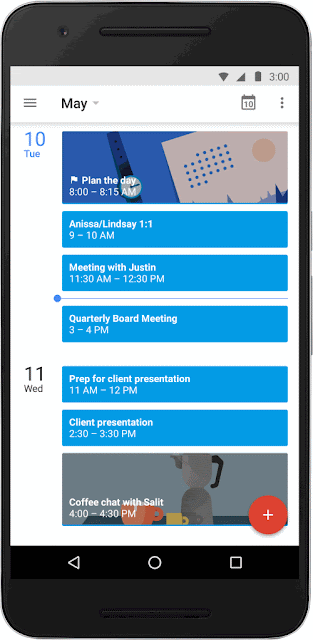
Note: Google Calendar detects the passcode or meeting ID from the location or notes field in the calendar event. If this information is not found, dialing in will be the same as before, where the passcode or meeting ID is dialed manually.
Launch Details
Release track:
Launching to both Rapid release and Scheduled release
Rollout pace:
Full rollout (1-3 days for feature visibility)
Impact:
All end users
Action:
Change management suggested/FYI
More Information
Google Play
Note: all launches are applicable to all Google Apps editions unless otherwise noted
Launch release calendar
Launch detail categories
Get these product update alerts by email
Subscribe to the RSS feed of these updates
Getting rid of spoofers: digitally sign your Gmail messages with 2048-bit DKIM keys
May 11th, 2016 | by Jane Smith | published in Google Apps
Back in 2011, we launched the ability for any Google Apps administrator to set up DomainKey Identified Mail (DKIM). DKIM is a way to digitally sign messages so that recipient servers can verify that the message really comes from your domain and hasn’t been changed along the way. Additionally, when you sign your messages with DKIM, they become less likely to get caught up in recipients’ spam filters.
The fight against spoofers still continues today, and as spoofers’ tools have gotten more powerful, 1024-bit DKIM keys are no longer as secure. For that reason, we’re pleased to announce that Google Apps customers can now digitally sign their messages with 2048-bit DKIM keys, and we strongly recommend making this the standard for all email messages sent from your domain going forward.
Recommendations
- If you are currently not using DKIM to protect your Gmail messages, set up 2048-bit DKIM in the Admin console. See the Help Center articles below for instructions.
- If you are already using DKIM with 1024-bit keys, check with your DNS provider to see if they support 2048-bit keys. If so, update your domain keys to 2048-bit for the best protection.
Important: Some domain registrars do not yet support 2048-bit DKIM keys, even though this has been available for more than 30 years. For those domains, we still offer the ability to sign messages with 1024-bit keys from a drop-down.
Launch Details
Release track:
Launching to both Rapid release and Scheduled release
Rollout pace:
Gradual rollout (potentially longer than 3 days for feature visibility)
Impact:
Admins only
Action:
Admin action suggested/FYI
More Information
About DKIM
Generate the domain key
Update DNS records
Update DNS records for a subdomain
Note: all launches are applicable to all Google Apps editions unless otherwise noted
Launch release calendar
Launch detail categories
Get these product update alerts by email
Subscribe to the RSS feed of these updates
Google BigQuery integrates with Google Drive
May 10th, 2016 | by Jane Smith | published in Google Apps
Google BigQuery is a serverless analytics data warehouse that lets you analyze large amounts of data to find meaningful insights, using familiar SQL. BigQuery is fully managed which means it frequently delivers features and upgrades without any downtim…
Stay focused with Google Calendar event notifications in your browser
May 10th, 2016 | by Jane Smith | published in Google Apps
We’re happy to announce that starting today the Gentle Notifications lab is graduating to become a fully supported feature.
You can now continue working in other tabs uninterrupted without losing track of your next meeting. Event notifications in browsers which support Web Notifications (like Google Chrome) will allow you to use native browser notifications instead of interruptive alerts.
Get notifications using your browser’s native notification.
This new feature is opt-in and automatically activated for existing lab users. In order to opt-in, simply enable browser notifications from the settings menu in Google Calendar.
Launch Details
Release track:
Launching to Rapid release, with Scheduled release coming in 2 weeks
Rollout pace:
Full rollout (1-3 days for feature visibility)
Impact:
All end users
Action:
Change management suggested/FYI
More Information
Help Center
Note: all launches are applicable to all Google Apps editions unless otherwise noted
Launch release calendar
Launch detail categories
Get these product update alerts by email
Subscribe to the RSS feed of these updates
Improved search and filter experience in Reports section of Admin console
May 9th, 2016 | by Jane Smith | published in Google Apps
Based on your feedback, we’re improving the search and filter experience in the
Audit Reports section of the Admin console. Previously, when you typed a query in any one of the “Filters” fields in a particular report, we would automatically begin searching when your cursor left that field—an unexpected and often confusing experience. To make this workflow more intuitive, we’re adding a
Search button below the filtering fields, which you’ll need to explicitly click to launch any search. This should make the process of pulling key reports quicker and easier.
Check out the Help Center for more details.
Launch Details
Release track:
Launching to both Rapid release and Scheduled release
Rollout pace:
Full rollout (1–3 days for feature visibility)
Impact:
Admins only
Action:
Admin action suggested/FYI
More Information
Help Center: Admin Audit Log
Note: all launches are applicable to all Google Apps editions unless otherwise noted
Launch release calendar
Launch detail categories
Get these product update alerts by email
Subscribe to the RSS feed of these updates
Accept questions from your audience when presenting in Google Slides
May 4th, 2016 | by Jane Smith | published in Google Apps
Any skilled presenter knows that an interactive presentation is often an effective presentation. Starting today, you can better engage your audience by allowing them to submit questions and vote on them during Google Slides presentations.
To see the feature in action, check out this video in which Google Science Fair winner Shree Bose fields questions from a group of 200 middle school students.
A few things to note:
- The Slides Q&A feature works on desktop computers, Android mobile devices, and iOS mobile devices.
- You can only use Slides Q&A if you have edit or comment access to that Slides presentation.
- By default, any user in your domain can submit a question. If your organization permits external sharing, you can allow external users to submit questions as well.
For more information on how to accept, submit, and view audience questions in Google Slides, check out the Help Center.
Bonus! Allowing your audience to ask questions isn’t the only way we’re improving the presentation experience on Slides today. We’re also making the following possible:
-
Use your mouse as a laser pointer in Slides on the web. Just choose the laser pointer option from the toolbar and move your mouse, and a red laser-like dot will appear in the same place on screen, helping your audience know where to look and when.
-
In the Slides iOS app, present to a new Hangout or to a Hangout selected from a meeting on your Google Calendar. For more information, check out the Help Center.
Launch Details
Release track:
Launching to both Rapid release and Scheduled release:
- All mobile features
- All audience features on mobile and desktop
Launching to Rapid release, with Scheduled release coming in two weeks:
- Ability for a presenter to enable Q&A on desktop
Rollout pace:
Gradual rollout (potentially longer than 3 days for feature visibility)
Impact:
All end users
Action:
Change management suggested/FYI
More Information
Help Center: Ask and present audience questions
Help Center: Present slides
Google for Work Blog: Talk with your audience — not at them — with Slides Q&A
Note: all launches are applicable to all Google Apps editions unless otherwise noted
Launch release calendar
Launch detail categories
Get these product update alerts by email
Subscribe to the RSS feed of these updates
Enhanced support for images in the Google Sheets mobile apps
May 4th, 2016 | by Jane Smith | published in Google Apps
Images—for instance, business logos—can make or break a spreadsheet. With that in mind, we’re launching improved image and drawing functionality in the Google Sheets mobile apps. Starting today, you can:
- View images and drawings in in the Sheets app on your iPhone or iPad.
- View images and drawings—even in frozen sections!—in the Sheets app on your Android device (previously these images would not render in frozen cells on Android).
Launch Details
Release track:
Launching to both Rapid release and Scheduled release
Rollout pace:
Gradual rollout (potentially longer than 3 days for feature visibility)
Impact:
All end users
Action:
Change management suggested/FYI
Note: all launches are applicable to all Google Apps editions unless otherwise noted
Launch release calendar
Launch detail categories
Get these product update alerts by email
Subscribe to the RSS feed of these updates
Support for Google Drive for Mac/PC versions 1.22 and older ending on July 1, 2016
May 3rd, 2016 | by Jane Smith | published in Google Apps
Today, we’re announcing that as of
July 1, 2016, we will discontinue support for Drive for Mac/PC sync client versions 1.22 and lower and going forward, any Google Drive for Mac/PC versions which are older than 1 year old.
Newer versions of the sync client offer several performance and security updates. We recommend that you take the following actions as soon as possible:
- If you manage your users’ installations, upgrade by following the instructions in the “Install Google Drive for Mac/PC” Google Apps Administrator Help Center article.
- If users have installed the client on their own, direct them to the “Install Google Drive for your Mac/PC” Drive Help Center article for end-users.
OS X and Windows users may check what version of the sync client they are using by clicking on the Drive for Mac/PC menu (which appear as three dots) and then clicking About. The dialog that appears will include the version number on it. Users still on versions 1.22 and lower after July 1, 2016 will no longer be able to sync files between Google Drive and local storage using Google Drive for Mac/PC.
In the coming weeks, we’ll also be contacting domain administrators whose users currently use older versions of Google Drive for Mac/PC and provide guidance on the appropriate migration path.
Release track:
Rapid release and Scheduled release
Note: all launches are applicable to all Google Apps editions unless otherwise noted
Launch release calendar
Launch detail categories
Get these product update alerts by email
Subscribe to the RSS feed of these updates
Contact importing now available in the new Google Contacts preview
May 3rd, 2016 | by Jane Smith | published in Google Apps
We recently announced that the new Google Contacts is available for preview from the Admin console. By enabling the preview, administrators can allow their users access to the new Google Contacts, along with the many benefits that come with it, like a new fresh look and improved contact merge features.
One popular request from Google Apps users was the ability to easily import their contacts into Google Contacts. We’re happy to announce that starting today, the ability to import contacts, powered by ShuttleCloud, is now available for Google Apps users.
Getting started for administrators
- Administrators must first enable the “Contacts Preview” for their users via Apps > Google Apps > Settings for Contacts > Advanced Settings
- Administrators must also enable “User email uploads” in the Gmail User Settings by going to Apps > Google Apps > Settings for Gmail > Advanced Settings
Getting started for users
- Users can now import contacts from a wide variety of supported mail and contact sources.
- From the new Google Contacts preview, simply click More > Import > and choose the account that you’d like to migrate from.
- You will be prompted for that account’s username and password, and your contacts will start transferring once you have successfully granted authorization.
- If you do need to import your contacts using a CSV file, click on CSV file in the above dialog box, and then click on Go to Old Contacts to be taken to Contacts Manager
Launch Details
Release track:
Launching to both Rapid release and Scheduled release
Rollout pace:
Full rollout (1-3 days for feature visibility)
Impact:
All end users
Action:
Admin action suggested/FYI, OR
Change management suggested/FYI
More Information
Enable the new Google Contacts for your users from the Admin console
Note: all launches are applicable to all Google Apps editions unless otherwise noted
Launch release calendar
Launch detail categories
Get these product update alerts by email
Subscribe to the RSS feed of these updates
What’s New in Google Apps newsletter – April 2016
May 2nd, 2016 | by Jane Smith | published in Google Apps
Check out the latest “What’s New in Google Apps” newsletter [pdf] for a roundup of all Apps launches from April 2016.Newsletter Archive & Translated Versions (coming soon for April issue)Note: all launches are applicable to all Google Apps editions…
April 27th, 2016 | by Jane Smith | published in Google Apps
Smartphones have made productivity portable. You no longer have to be at your desk to catch up on meeting notes, dial into a conference call, or send an email. But scheduling meetings on the go is still difficult, as you have to open your laptop to check everyone’s calendar and find a time that works.
Starting today, if you use Google Apps for Work or Edu, you can schedule meetings from anywhere with “Find a time” in Google Calendar for Android.
With a single tap, “Find a time” helps you find meeting times that work for everyone—even if they’re in different time zones—based on their availability and the times they usually have meetings. If there are no times that work, Calendar will look at which conflicting meetings can most easily be rescheduled. Designed specifically for organizations where sharing your calendar with colleagues is the norm, here’s how it works:

“Find a time” makes suggestions, but you’re still in control. You can tap to see everyone’s schedule at a glance—perfect for making sure the timing works for all. And if you manage someone else’s calendar, you can use the feature to schedule meetings on their behalf as well.
Download Google Calendar for Android to get easy, on-the-go scheduling. And yes, we’re also working on bringing “Find a time” to iPhone, as well as easier ways to schedule on the web.
Launch Details
Release track:
Launching to both Rapid release and Scheduled release
Rollout pace:
Full rollout (1-3 days for feature visibility)
Impact:
All end users
Action:
Change management suggested/FYI
More Information
Help Center
Note: all launches are applicable to all Google Apps editions unless otherwise noted
Launch release calendar
Launch detail categories
Get these product update alerts by email
Subscribe to the RSS feed of these updates
April 26th, 2016 | by Jane Smith | published in Google Apps, Youtube
Posted by Matt Ward, Software Engineer
(Cross-posted on Google for Education blog)
In August 2015 we launched YouTube Settings in Google Apps to give schools and other organizations a way to manage the YouTube experience for users logged in to their domains and on networks they manage. Today we’re happy to announce a number of new features to make these more flexible and easier to use.
Channel whitelisting
Administrators and designated approvers can now whitelist entire channels, not just individual videos. For example, if you want to ensure that all current and future videos uploaded to your organization or school’s channel are watchable by your users, you can now simply add the entire channel to your approved list. Learn how to designate approvers.
Using YouTube settings in Google Apps for Education already gives your users access to all the videos on educational YouTube channels like Veritasium, but now your domain’s video approvers can add other channels as well, like your school’s YouTube channel.
More flexible options for administrators
Administrators have new capabilities to help them manage YouTube to meet the needs of their organization.
- Administrators can now choose between two levels of Restricted Mode restrictions — strict or moderate — for their logged-in users.
Admins can select between a strict and moderate level of restriction for YouTube.
- Network managers can now use an HTTP header to enforce either strict or moderate restricted mode on managed devices.
- Network managers can also use this new DNS configuration if they want to enforce moderate restricted mode on wifi networks they manage.
- Coming soon, logged-out users on YouTube’s mobile apps on restricted networks will also get a restricted experience.
- And since we know this can be tricky to set up, network managers can visit this page to ensure their network restrictions have been configured correctly.
YouTube for Schools
In August we announced that we would no longer be maintaining YouTube for Schools (YT4S). As of July 1, 2016, YT4S will no longer be available. View the YouTube Settings in Google Apps Help Center for additional details.
More information
Learn how to enable YouTube settings for your Google Apps domain and join the discussion in the product forum.
Launch Details
Release track:
Launching to both Rapid release and Scheduled release
Rollout pace:
Full rollout (1-3 days for feature visibility)
Impact:
Admins only
Action:
Admin action suggested/FYI
Note: all launches are applicable to all Google Apps editions unless otherwise noted
Launch release calendar
Launch detail categories
Get these product update alerts by email
Subscribe to the RSS feed of these updates

